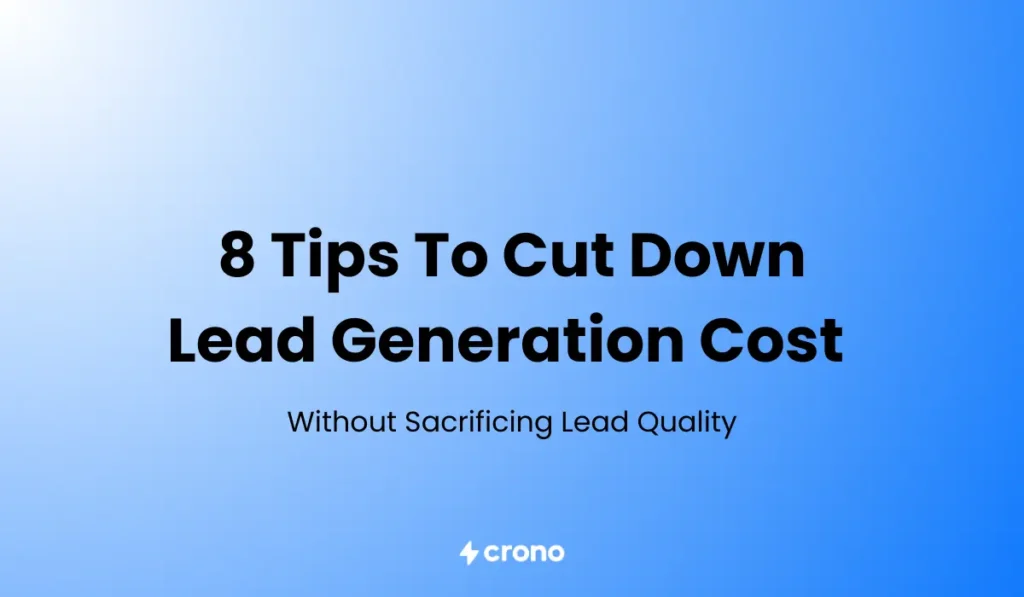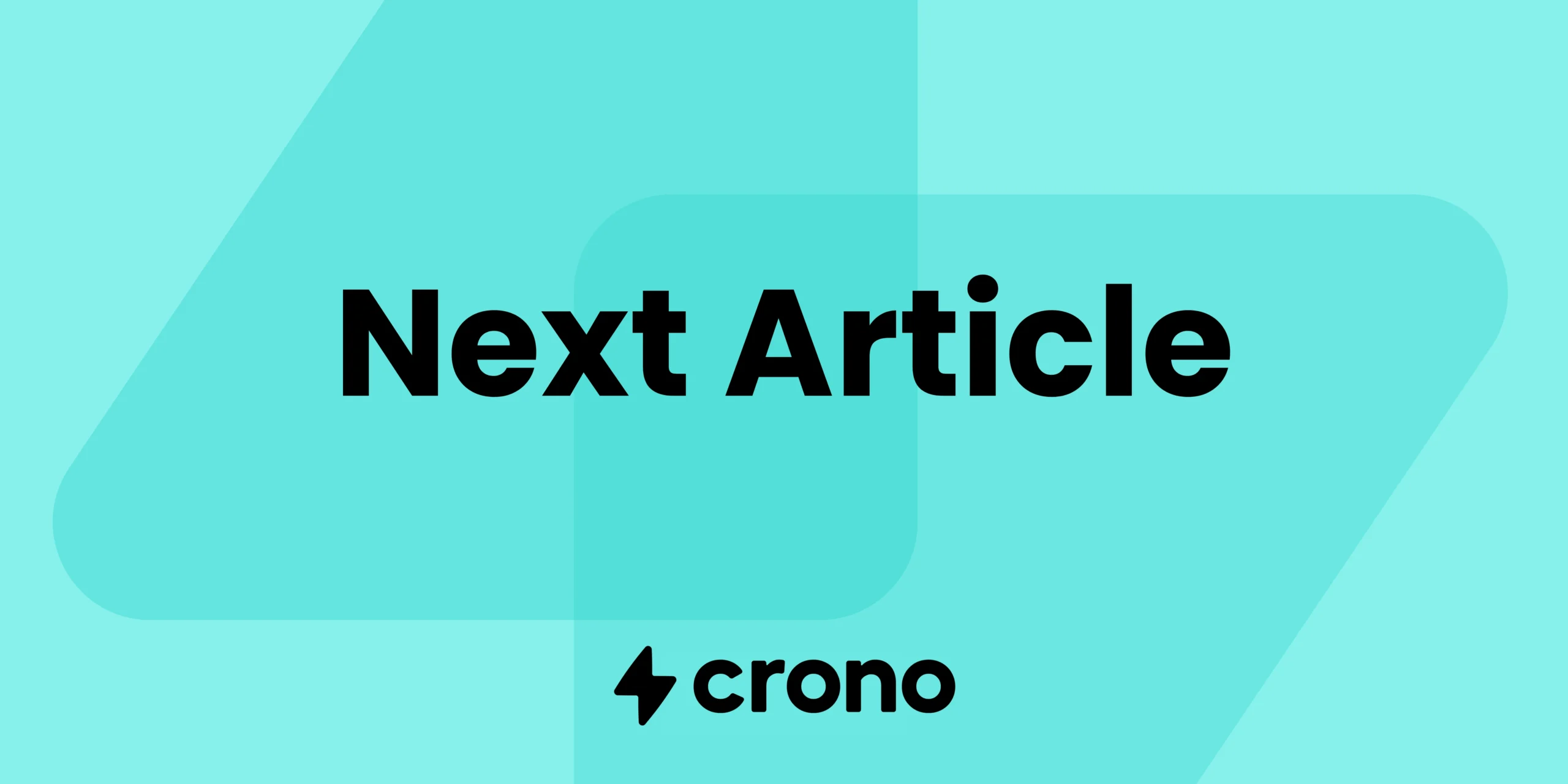Let’s be honest, outreach platforms should make life easier. But somewhere between the promise of “automated prospecting” and your actual invoice, something went sideways.
What started as a $99/month tool now snowballs into $5,000+ in monthly spend before you’ve even closed a deal. You’re (probably) paying for onboarding you didn’t ask for, features no one uses, and watching reps burn 47 minutes a day just toggling between tools that don’t talk to each other.
It’s frustrating and expensive.
If you’re feeling like your cost-per-lead is creeping up without the return to match, you’re not alone. The good news? It doesn’t have to be this way.
In this guide, I’ll break down 8 proven tactics to reduce CPL using smarter automation, not bigger budgets.
You’ll learn:
- How to calculate true ROI and identify where your spend is actually paying off
- What industry benchmarks say about your current performance
- Whether to build your prospecting engine in-house or outsource it to scale faster
Let’s dig in.
1. Benchmark against industry-specific CPL data
If you don’t know the benchmark, you don’t know if you’re overpaying.
It’s a fundamental error we see all the time: sales leaders think they’re efficient with a $200 CPL, unaware that the industry average for B2B SaaS is actually $164. That’s $1,847 a month overspent on underperforming channels.
While lead gen cost per industry fluctuates, a 2025 organic CPL report provides a concrete starting point for non-paid channels like email outbound:
Industry Benchmarks
Average Organic Cost Per Lead by Industry
| Industry | Average Organic CPL |
|---|---|
| eCommerce | $83 |
| B2B SaaS | $164 |
| IT & Managed Services | $385 |
| Cybersecurity | $404 |
| Fintech | $413 |
| Software Development | $510 |
Note: These figures are for organic lead generation only. Paid channels can significantly reduce your CPL.
For small teams leveraging outbound sales software, your CPL can drop even further below these averages, especially if you’re:
- Laser-targeting a highly specific Ideal Customer Profile (ICP).
- Running a lean operation with a focused tech stack (1-2 core tools, not a bloated, expensive CRM).
- Handling outreach and qualification in-house, maintaining rigorous quality control.
2. Calculate the actual cost of your lead generation stack
A lean startup can spend a few hundred dollars a month.
A scaling B2B team can easily spend 4-5x that. The difference isn’t always the number of reps, but the hidden costs that most teams ignore.
Your budget breaks down into three predictable buckets: tools ($200−2000/month), data ($0.10−$2 per contact), and labour (15−40 hours/week). Here are the factors that really drive those numbers up:
- Software tier and feature set: Upgrading to a premium tier might double your base price, but the ROI from features like AI personalization can reduce research time from 12 minutes to just 2 minutes per prospect often justifies it.
- Integration needs: A Zapier integration might cost $20−50 a month, but the real cost is the 3-5 hours a week your team spends managing data sync issues.
- Data volume and quality: Lead databases and enrichment tools often charge based on the number of credits, contacts, enriched fields, and data quality. Some real-time contact data costs $0.50-$2 per verified contact. While that might be costly, it’s better to pay a little more for real-time, verified data to ensure your campaigns actually reach their targets.
The takeaway is this: When you see how quickly these individual costs add up, the solution isn’t to cut tools, it’s to consolidate your tech stack.
3. Deploy all-in-one sales automation software to cut costs
Sales reps spend 70% of their time on non-selling tasks, much of which is tab-hopping between disconnected tools.
That’s 47 minutes a day, per rep, wasted on administrative tasks-a lost productivity cost of over $312 monthly. This inefficiency is a silent killer of your lead generation budget.
Instead of stitching together a CRM, a prospecting tool, and an email sequencer, use a comprehensive, all-in-one platform like Crono. It’s built for small sales teams to stay lean without compromising on performance, bringing everything into one powerful workspace.
Here’s how a platform like Crono reduces lead generation cost:
- Integrated prospecting: Instead of buying expensive lead lists, a tool like Crono have a native, real-time connection with LinkedIn Sales Navigator. You can use it to tap into LinkedIn’s 1+ billion contacts, use filters to mirror your ICP, and even generate personalized LinkedIn messages.
- Unified multichannel outreach: Run automated outreach across email, LinkedIn, and calls within unified, dynamic sequences. The ability to create branching sequences that adapt based on prospect actions means you’re not just blasting emails; you’re running smart, targeted campaigns.
- Bidirectional integration: Real-time, native integrations with CRMs like HubSpot, Salesforce, and Pipedrive eliminate manual data entry. Everything is tracked, so your reps can work directly inside tools like LinkedIn without ever leaving the platform. This cuts down on the wasted time and energy that trickles down into your CPL.
The true advantage here is that when all your data lives in one system, you can identify patterns that reveal your lowest-cost acquisition channels and double down on what works. And the lowest-cost channel often starts with a warm introduction.
4. Slash touches required through Social Selling
Converting a cold prospect typically requires 7 to 13+ touchpoints.
Your CRM might show this as consistency, but the invisible cost is what kills your budget. By my estimate, the typical rep would spend around $20 to chase a lead across 12 touchpoints and 3 channels.
Social selling flips this equation. When prospects already recognize your brand from social platforms, your initial outreach becomes a warm conversation, not an interruption. This familiarity can reduce the touches needed by 30-40%, directly cutting your acquisition costs.
Here’s how a platform like Crono can help you lower CPL through social selling:
- Automated engagement-based prospecting: Auto-import contacts who have engaged with your social media posts directly into a targeted list. This means you’re building warm lead lists from individuals who’ve already shown interest, eliminating the need for expensive cold data acquisition.
- Real-time activity tracking: Get a live feed of what your prospects are doing on social media directly within your sales platform. This enables your reps to spot timely engagement opportunities and tailor their interactions for maximum impact, ensuring every social touch is relevant.
- Enrich messaging with real-time insight: The insights gained from social media interactions can be used to personalize email outreach or prepare for phone calls, ensuring that every touchpoint is relevant and engaging.
Social selling is the foundation. But even the warmest leads need optimized messaging to convert efficiently. This is where systematic testing becomes crucial.
5. Consistently A/B test your outreach sequences
While most outreach tools have built-in testing features, about 30% of sales teams still don’t use them. Instead of blasting one email sequence to everyone, run structured experiments:
- Test different subject lines to boost open rates.
- Test different opening sentences to improve engagement.
- Test different Calls-to-Action (CTAs), such as “Book a call” vs. “Interested in learning more?”.
The goal is simple: find what drives replies and double down on it. Even a small 2–3% bump in response rate might seem minor, but across 500 leads, that’s 10–15 extra conversations for the same amount of work — and that can make a big difference to your pipeline.
6. Train your team to maximize tool utilization
If your team is only leveraging 30-40% of what your software is capable of, you’re overpaying for 60-70% of unused features. That unused 70% still hits your budget every month.
Investing even 1-2 hours per month in internal training or peer walkthroughs can massively improve tool usage and immediately reduce wasted spend. Ensure your reps are masters of their tools:
- Can they use advanced filters and targeting rules to identify niche ICPs?
- Are they setting up automated follow-ups and truly personalized snippets within sequences?
- Do they interpret campaign analytics to proactively adjust messaging, or are they just sending and hoping?
7. Optimize the sales process with AI prospecting tools
Unlike traditional sales automation tools, AI prospecting tools can scale operations with intelligent task automation. For instance, you can:
- Identify high-intent leads faster: AI algorithms now analyze vast, real-time datasets to pinpoint prospects most likely to convert (often with 3-5x higher accuracy), moving beyond basic demographic fits.
- Personalize outreach at scale: AI can generate hyper-relevant, nuanced messages based on deep prospect data, saving hours of manual research per lead and boosting reply rates. We’ve consistently seen teams increase sales outreach effectiveness by over 37% increase through AI automation.
This way, reps can drastically reduce the human effort required per lead, directly driving down your overall Cost Per Acquisition.
8. Set up lead scoring in your CRM software
Not all leads are created equal. Some are ready to buy now, others need nurturing, and some are just tire-kickers. Lead scoring helps you differentiate, ensuring your team focuses on the most promising opportunities.
Here’s how to implement it:
- Define scoring criteria: Assign points based on demographic data (job title, company size, industry) and behavioral data (website visits, email opens, content downloads).
- Integrate with your CRM: Most modern CRMs have built-in lead scoring features. Configure them to automatically assign scores.
- Prioritize outreach: Sales reps can then prioritize leads with higher scores, ensuring they spend their valuable time on prospects most likely to convert.
Systematically scoring leads, you optimize your sales process, reduce wasted effort on low-quality leads, and ultimately lower your Cost Per Acquisition (CPA).
How to calculate cost per lead & ROI
To determine whether these optimization strategies are actually working for your business, you need to track the right metrics and calculate your return on investment.
Calculating Cost Per Lead (CPL)
To calculate CPL, divide the total lead generation cost by the total number of leads generated.
Formula: Total lead generation spend ÷ Number of leads generated
Example:
- Total Spend: $500 (software subscription, email credits, etc.)
- Leads Generated: 50
- Your CPL: $500÷50=$10 per lead
Calculating Return on Investment (ROI)
ROI is the metric that ties it all together and tells you if the money you’re putting in is actually generating a return. You’ll need to know your Cost Per Acquisition (CPA) and Customer Lifetime Value (CLTV).
Formulas:
- CPA: {Total sales & marketing cost} ÷ {Number of new customers}
- CLTV: Avg. deal size×Purchases/year×Customer lifespan (in years)
- ROI: CPA(CLTV−CPA)×100
Example:
- Total lead gen cost: $1,100
- Customers acquired: 4
- CPA: $1,100÷4=$275
- CLTV: $500×1×3=$1,500
- ROI: $275($1,500−$275)×100=445%
What this means: For every $1 you spend acquiring a customer, you’re earning $4.45 back over their lifetime.
Cut down CPL with Crono
You’ve seen the numbers. You understand the system.
Reducing lead generation cost with sales automation software is about strategic implementation and continuous optimization. For small sales teams, the path to predictable, cost-effective growth lies in a lean, integrated tech stack that automates the mundane, empowers your reps, and provides clear ROI.
Crono offers transparent pricing and no hidden onboarding fees. Everything your team needs-from verified data to multichannel sequences to AI personalization-is built in and fairly priced.
You can forecast your lead gen costs with confidence, scale usage without blowing up your Customer Acquisition Cost (CAC), and avoid the slow bleed of paying for five tools to do what one should handle.
Don’t take our words for it, B2B sales teams like 4Books & Unguess are optimizing lead gen costs with Crono with:
- Over 50% increase in appointment rates without adding any headcount.
- 15% lift in lead conversion rates while cutting manual data entry time by 20%
- 800 qualified meetings booked and $2M in pipeline
Stop letting hidden costs and inefficient workflows eat into your budget. It’s time to take control. Book a free demo with Crono today and see how it fits into your lead generation process.

